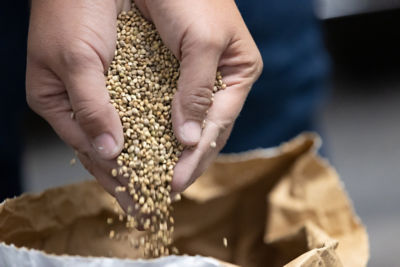Causal Agent
Physiological
Distribution
Worldwide
Symptoms
Gray to black spots develop when fruit are approximately 7.5 cm (3 in) in diameter. Spots occur singly or in groups. As fruit mature, the spots turn green to gray-brown to yellow, which renders the fruit unmarketable. Stip can develop in all types of peppers but is more common on mature, red fruit harvested in the fall.
 Stip is more common on mature fruit harvested in the fall.
Stip is more common on mature fruit harvested in the fall.
Conditions for Development
Stip is a physiological disorder believed to be caused by a calcium imbalance. It most commonly develops in older, open-pollinated varieties. Stip generally occurs during fall months when days are short and cool. Stip is most common and severe in varieties grown on soils farmed with low calcium and/or high nitrogen and potassium fertilization rates. Tissue analysis reveals that stip resistant varieties have higher calcium and lower nitrogen and potassium concentrations than affected varieties.
Control
Grow stip-resistant hybrids, and avoid open pollinated varieties in the fall. Calcium applications can significantly help reduce the occurrence and severity of stip.




